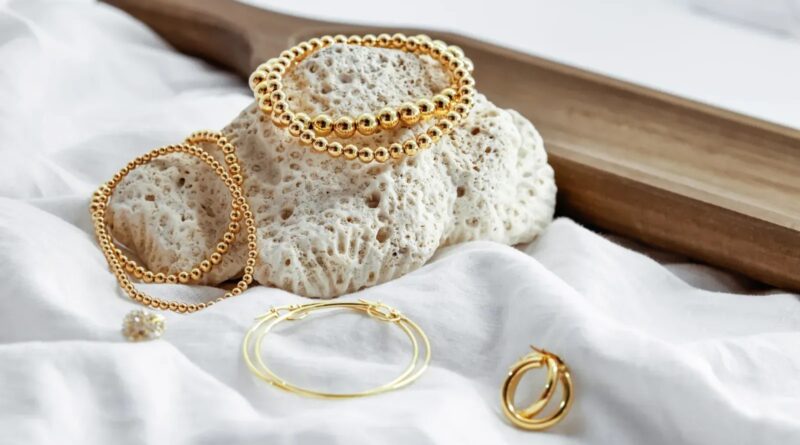Mastering Jewelry Product Photography: A Comprehensive Guide
Jewelry product photography is a specialized niche that requires meticulous attention to detail, precision, and a keen eye for aesthetics. Capturing the allure of jewelry pieces, whether it’s a sparkling diamond ring, an elegant necklace, or a vintage brooch, demands more than just a good camera. This article will explore the essential techniques, equipment, and tips needed to excel in jewelry photography.
1. Understanding the Importance of Lighting
Lighting is the cornerstone of jewelry photography. Jewelry pieces are often small, reflective, and intricate, which means that lighting must be controlled carefully to avoid unwanted reflections and shadows.
- Soft Lighting: Using soft, diffused lighting is crucial. It reduces harsh shadows and minimizes reflections, allowing the true colors and details of the jewelry to shine through. A lightbox or a softbox is a valuable tool for this purpose.
- Directional Lighting: Position your lights strategically to highlight the facets of gemstones and the texture of metals. A good practice is to use multiple light sources from different angles to create depth and dimension.
2. Choosing the Right Background
The background plays a significant role in jewelry photography as it can either enhance or distract from the subject.
- Neutral Backgrounds: White, black, or grey backgrounds are commonly used as they make the jewelry stand out. A clean, neutral background keeps the focus on the product without overwhelming the viewer.
- Textured Backgrounds: For a more artistic approach, consider using textured backgrounds like marble, wood, or velvet. These can add a sense of luxury and context but should be used cautiously to ensure they complement rather than compete with the jewelry.
3. Macro Photography for Fine Details
Jewelry often has intricate details that need to be captured clearly. Macro photography is essential for showcasing these fine elements, such as the cut of a diamond or the engravings on a ring.
- Macro Lenses: Invest in a good quality macro lens that allows you to get close-up shots with sharp detail. A focal length of around 100mm is ideal for capturing jewelry.
- Focus Stacking: This technique involves taking multiple shots at different focus points and merging them in post-processing to create an image that is sharp from front to back.
4. Managing Reflections and Glare
Reflections are one of the biggest challenges in jewelry photography, especially with highly reflective surfaces like metals and gemstones.
- Polarizing Filters: A polarizing filter can help reduce reflections and glare, allowing the true color and luster of the jewelry to be captured.
- DIY Solutions: Using a piece of white paper or a white reflector can help control reflections. Placing these around the jewelry can soften harsh reflections and create a more even look.
5. Post-Processing for Perfection
Post-processing is where you can fine-tune your images to perfection. While it’s important to capture the best possible image in-camera, editing software like Adobe Photoshop or Lightroom can enhance the final result.
- Color Correction: Adjust the color balance to ensure that the metals and gemstones are represented accurately.
- Sharpening: Use sharpening tools to enhance the clarity of the details, especially in macro shots.
- Background Cleanup: Remove any dust, scratches, or imperfections that might distract from the jewelry.
6. Styling and Composition
The way you style and compose your shots can significantly impact the perceived value of the jewelry.
- Rule of Thirds: Apply the rule of thirds to create balanced and aesthetically pleasing compositions.
- Props and Models: Introducing props or models can help contextualize the jewelry, showing how it might look when worn or displayed. However, the jewelry should always remain the focal point.
7. Equipment Essentials
While a high-end camera is beneficial, other equipment is equally important in jewelry photography.
- Tripod: A sturdy tripod is essential for achieving sharp images, especially in macro photography where any movement can cause blurring.
- Remote Shutter Release: To further minimize camera shake, use a remote shutter release or the camera’s timer function.
- Reflectors and Diffusers: These are critical for controlling light and shadows, ensuring the jewelry is lit evenly.
8. Tips for Success
- Practice Patience: Jewelry photography requires patience and precision. Take your time to adjust lighting, angles, and settings until you achieve the desired result.
- Experiment with Angles: Don’t be afraid to experiment with different angles and perspectives to find the most flattering view of the jewelry.
- Consistency is Key: If you’re shooting a collection, maintain consistency in lighting, background, and composition to create a cohesive look.
Conclusion
Jewelry product photography is an art form that combines technical skill with creativity. By mastering lighting, composition, and post-processing techniques, you can create stunning images that showcase the beauty and craftsmanship of each piece. Whether you’re photographing for an online store, a catalog, or a portfolio, the goal is to capture the essence of the jewelry and make it irresistible to potential buyers.



